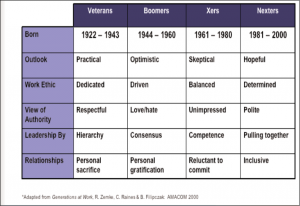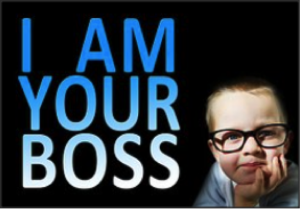THE IMPORTANCE OF BEING EARNEST ABOUT ONBOARDING
Forging that critical link between the right people and the right companies is what Key Corporate Services is all about. In our role as executive recruiters, our task is gaining the attention of the best and brightest candidates in the job market, and then sharing those candidates’ stories with our many corporate and organizational clients.
Years of experience have taught us one important lesson, a lesson too often overlooked in the executive job match field:
Never neglect the onboarding process!
The importance of onboarding has evidenced itself in every one of the industries and professional fields served by our dedicated teams, from consumer goods and products to horticulture, from pharmaceutical to chemicals, from finance and accounting to food ingredients and additives:
The success of any executive job placement depends on successful onboarding.
Writing for Fortune Magazine, Anne Fisher points out that some 40% of executives who change jobs fail in the first 18 months on the new job. While this number is alarmingly high, what’s even more troubling is that this failure rate hasn’t changed over the past fifteen years! Who is at fault? Fisher says, “It’s everyone’s fault.” If everyone paid attention to the basics of executive onboarding, there would be far fewer failures.
George Bradt, executive onboarding expert at PrimeGenesis writing in Forbes, thinks executives’ failures in new roles can almost always be traced to both candidates’ and companies’ failure to do three things:
Success step #1: Get a head start
Take advantage of the “fuzzy front end”, that period between the hiring and the starting. That’s the time for jump-starting the incoming executive’s relationships with:
- Team members
- The boss’ assistant
- Key clients and customers, both internal and external
- Key company founders or board members who wield influence
Who does that?
The incoming employee can initiate conversations with team members and direct reports. An internal mentor can be assigned to identify key players and “prep” the newcomer on any topics of disagreement or tension among team members or other players.
Success ingredient #2: Manage the message

Since, as Bradt points out, “everything communicates”, it’s important for both sides be conscious of what is said and what is not said. Conversations are best kept on a professional level, with the incoming executive keeping information about his/her personal life to a minimum, and avoiding any negative remarks either about either his/her old company or the new.
On the company end, while problems may certainly be discussed, the tone should be upbeat with an emphasis on the achievements that will now become possible with this addition of talent.
Success Step #3: Prepare the team and the new executive for each other
Bosses of failed executives often say he or she “wasn’t what we expected,” while failed executives are likely to complain that the situation wasn’t what they had been led to expect.
Such a failure is regrettable. Successful onboarding pays handsome dividends. The Boston Consulting Group reports that organizations with strong onboarding programs experience 2.5 times the revenue growth and 1.9 times the profit margins of organizations with weak onboarding programs.
When done well, onboarding combines strategy, consistency, and other priorities to create a cohesive, structured process. The onboarding process needs to be documented and repeatable. Reinventing the wheel every time a new employee joins the team only jeopardizes the HR and business goals you could potentially achieve with a well-thought-out onboarding process.
Onboarding the company CULTURE – new employees just want to fit in!
Culture has to be the centerpiece of any onboarding program.
To realize this, you need only reflect on the experiences you encountered when you started a new job. Going in, you probably felt comfortable about your abilities in handling the technical aspects of your new position. You knew you had the experience and skills to do a great job. But, still, you were nervous and your stomach churned with anxiety. The reasons were simple. You were beginning a new journey, stepping into a whole new environment. You’d be meeting and working with new people. New relationships had to be forged. You were not quite sure about the attitudes, behaviors, and values of those new peers, let alone those of your new boss!
You felt uneasy about “fitting in.”
And, therein lies the onboarding challenge inherent in any new job: everyone wants to “fit in.” Fitting in is a common expression for assimilation. For any new employee, assimilating quickly and successfully into the culture of a company is extremely important. It can mean the difference between that employee’s staying with the company or not. Cultural onboarding is difficult and can be awkward, but not handling the process properly could result in that new employee walking out the door and leaving the company.
Much of the “churn” can be prevented with an effective onboarding process structured to quickly provide the new employee with a clear understanding of the mission and values of the company. The newcomer needs to know – and quickly – what the organizational norms are, both social and professional, in order to identify with and align with the company’s core values.
Research shows that organizations that engage in formal onboarding by implementing step-by-step programs for new employees to teach them …what the norms of the company are and how they are to behave are invariably more effective than those that do not.
Key Corporate Services spends a lot of time and effort with client companies even before any hiring takes place. When interviewing a candidate, we delve into corporate cultures they’ve experienced in the past to learn what they liked and what they didn’t like. We listen to how each candidate communicates. Do they take responsibility or generally blame others for their own failings? Listening to what people say and how they say it, we generally get a good feel for how the candidate will fit into our client’s organization long before the candidate ever meets the first interviewer from that organization. Understanding what motivates a particular candidate, we pass on that information to the hiring authorities so that they know what to emphasize during the interview process.
Techniques for Culture alignment
Companies bringing new employees on board may choose from a variety of techniques to introduce the newbies to their company culture.
Executive-led workshops: Executives within the company, more than other employees, understand their role in reflecting the core values of the organization and setting an example for other employees. Those executives can play a critical role in embracing the company’s mission statement and communicating it effectively to newcomers.
Conversations with founders: If the company’s founders are available, their involvement in cultural onboarding can be a powerful asset. Learning about the organization’s history and culture through a series of conversations with founders and key managers at the corporate headquarters makes new employees feel valued and included. While the investment can be significant, the impact of such meetings can be substantive.
Just how important is culture in the onboarding process?
George Bradt, executive onboarding expert at PrimeGenesis, states culture should be the centerpiece of any onboarding program!
Bradt cites two reasons:
- Corporate culture is the only truly sustainable competitive advantage
- Poor fit with the culture is the #1 cause of new hire failure
Culture should be incorporated into every aspect of the onboarding activities. HR departments are often focused on getting forms and requirements completed and tend not to concern themselves with helping the new employee “fit in” from the very first day. In fact, a technology interface, as opposed to “human” contact, is commonly used for completing the technical aspects of onboarding. Yes, enrollment in the benefit programs and completing the legalities are essential steps, but equally important (Bradt would say even MORE important) is the need to share and provide information about the organization’s culture and expectations.
GENERATIONAL DIFFERENCES – the hidden challenge in onboarding
 There is a saying about generational differences that goes like this…
There is a saying about generational differences that goes like this…
All generations have similar values; they just express them differently.
From an onboarding perspective, we disagree!
The fact is, new employees bring with them generational values unique to their own age groups, and companies must consider these differences during the onboarding process. Knowing how to effectively deal with the nuances and differences inherent in each generation is becoming increasingly important.
Why?
- Working lives are longer today ever before. Jeanne Meister, author of The 2020 Workplace, explained it best in a recent Forbes article: “We are facing a new future in terms of demographics at work: we will soon have five generations in the workplace at once.”
This is a radical change from past years, when only three or four generations at a time were in the workplace. Work behaviors did not vary as much between generations.
- As we continue to extend life expectancy, our working careers are also expanding. The new reality is that, within our lifetimes, we may see people still employed at 75 or older. The five-generations-in-one-workplace Meister talks about could expand to six or even seven!
- Companies have to recognize generational differences and tailor the onboarding process accordingly. Generations differ in their outlook on life, work ethic, view of authority, how they want to be led, and the type of relationships they desire.
At Key Corporate Services, it has been our experience that the savvy organization that structures onboarding programs to account for these different values and the challenges they pose will be have a higher retention rate of those new employees at the end of the first year. Better employers recognize the differences and strive to educate their management teams in the best ways to communicate with the different generations.
If there is one thing to understand about effective onboarding with different generations, it is this…
One size does NOT fit all!
Generations harbor differences unique to their age group. Onboarding has to pay attention to these differences if it is to effectively assimilate each new employee into the fold of the company.
The chart below shows four generations currently in the workplace and highlights some core values of each.
Courtesy of Human Capital Institute
The Veteran Generation
Though surprising to some, there are still lots of veteran-era employees in the workplace or looking for work. As life expectancy increases, people of this era are staying in the workplace longer. Or, they may be coming out of retirement, seeking work to supplement retirement income.
Born between1922-1943, the Veterans have values formed, in large part, by two events: the Great Depression and WWll or the Korean War. Living through tough times made them dedicated, possessing a belief in hard work. They are conformists, and don’t want to “stand out”, as this might lead to trouble. Frugal in their spending habits, they have a deep and abiding respect for law, order, and authority.
…Implications for onboarding Veterans
Veterans don’t like change. The very act of starting a new job is a challenge for them. Not comfortable with standing out in a crowd, they will try conforming to the culture, even if internally they are experiencing conflict about aspects of the new environment. They don’t want to be seen as anything but team players, so they may not speak up, even when they disagree with a decision.
- Onboarding programs for this generation start with an emphasis on respect. This can be as simple as finding ways to accommodate Veterans’ work scheduling needs.
- The hiring manager needs to work closely with Veteran employees, making sure they are comfortable in their new roles. There needs to be clarity and consistency with respect to each employee’s role and responsibilities. Performance standards and decision-making processes need to be explained.
- As this generation is not comfortable with conflict, the hiring manager needs to make new hires feel at ease with sharing their inner thoughts about their ongoing experiences with their new positions.
Born after the war, between 1944 and1960, Baby Boomers grew up in an era of optimism. Jobs were generally plentiful in the post-war economy and there was a general aura of optimism about the future. Baby boomers do feel, however, that they have to put in the hard work to make their success happen. Personal growth and health are important to them. Boomers are not as frugal as their parents, and are comfortable with using credit. At work, “staying on-budget” will not be a natural strength for them.
…Implications for onboarding Baby Boomers
Baby Boomers are team-oriented and may be reluctant to go against their peers. Boomers tend to put process ahead of results. Onboarding should encourage problem-solving and and decision-making through consensus of the team.
- Hiring managers need to realize this generation may be overly sensitive to feedback, yet judgmental of others.
- Baby Boomers’ parents had the time and money to lavish attention on their children, so this generation accustomed to having the world revolve around them. When onboarding this generation, hiring managers should look for ways to handle personal egos while promoting the team environment.
- While the Baby Boomers are willing to work hard, their adherence to budgetary guidelines may not be as important. So, managers will need to periodically reinforce the importance of budgets and other business costs.
Generation X
The X Generation, born between 1961 and 1980 is now filling the majority of managerial and leadership roles in companies. Contrary to previous generations, Xers were raised in a diverse culture and therefore value diversity, whether it is cultural, religious, or ethnic. An important value to them is finding a balance between work and home. They saw the amount of work their parents put into their jobs, resulting in having to ignore them, missing out on soccer games and school events. This group is the first “latch-key” generation. Significantly, Xers are the original high-tech generation, in fact having created much of the technology in use today.
…Implications for onboarding Xer’s
- Xer’s present unique challenges when onboarding. They seek scheduling flexibility in the work environment. They expect a balance between work and their personal life. Hiring managers should include in their onboarding process ways this accommodation can be met.
- Xer’s are seeking challenging opportunities in their job, so an onboarding program that fosters mentoring, learning, and advancement into new areas is appreciated. Since Xer’s want their job to be meaningful and interesting, onboarding needs to emphasize the importance of the job and the opportunities for career growth on a continuing basis.
- While they lack the experience of the boomers, Xers think they have the solutions. Xer’s need to know there is an open door policy with management where they can come and share concerns. Hiring managers need to watch for cynicism in Xer’s and look for ways to turn this around to a more positive attitude. This cynicism could be the result of Xers’, perhaps because they are saddled with heavy college debt, feeling they are the first generation that may not be having it better than their parents.
Born during the period between1981 and 2,000, Nexters are also known as millennials. This generation will be taking over almost half of the jobs in America in the next 5 years!
Older colleagues sometimes judge Nexters as lazy, defiant, and generally immature.
…Implications of onboarding Nexters
Regardless of the texting, Facebooking, and selfie-ing, this generation brings a fresh, talented, perspective to the workplace that can be extremely advantageous to a business, Meister advises.
- The key to onboarding Nexters is providing them with the right tools and with strong leadership while honing their skills and capitalizing on their strengths. This generation is into instant gratification. They want it now, or at least, be able to Google it with their fingertips. Managers should not assume Millennials will study the company handbook. Instead, time should be allotted to going over the material with them. Project goals need to be stated often and clearly if these are to remain on the Nexters’ radar.
- This group feels more comfortable texting than talking on the phone. They would rather email than have a face-to-face conversation. This presents a challenge in onboarding Nexters on the culture of the company, which traditionally involves holding group orientation sessions and socializing. Less formal, one-on-one or small group encounter sessions might be most effective.
- Nexters value their free time. Managers can help them feel better about their job if there is flexibility about work schedules.
- If possible, relax dress codes and allow employees to listen to music while they work.
- Managers should approach millennials from the standpoint of being mentors first, and authoritative figures last. The new employees will adapt more quickly and be more productive.
Hiring managers play THE critical role in onboarding.
If there is one indisputable truth about onboarding that applies to all companies, it is this:
The person within your organization who has the power to make or break a new employee’s success is the hiring manager.
It’s the employee hiring manager who sets the stage for success or failure. Dr. Talya Bauer, a pioneer in new employee socialization, has this to say: “He or she sets the culture and climate within the unit, assigns tasks, sets the tone for communication and cooperation, etc. If they are doing their job well, they are paying attention to the special needs of new employees. If they are not, they can expect too much and provide too little support early on. While new employees may overcome this, it will take them longer and they may miss key pieces of information about the context that are never truly addressed.”
Key Corporate Services recognizes the critical role a hiring manager plays in successful onboarding. Consequently, we recommend to our clients that the hiring authority have a plan on what his/her expectations are for the first two week, the first month, the first three months and the first twelve months of employment.
We realize that when someone “messes up”, it’s more comfortable for the hiring manager to avoid saying anything. But when that happens, the new employee has made an emotional “withdrawal” from the hiring manager’s “account”. Most people don’t like confrontation, but new employees who aren’t given much direction or information on specific expectations may not be aware of anything they did wrong. This could compound mistakes until someone blows up. We suggest putting in a formal and regular review of progress so that any issues are addressed immediately.
It’s unfortunate, but many companies fail to recognize the strategic role hiring manager’s play in successful onboarding. Often times, that hiring manager is simply not familiar with all the intricacies associated with a thorough onboarding process. The reality is, Dr. Bauer states, this lack of knowledge leads to the most common failure associated with onboarding – lack of follow-up. “I encounter a lot of individuals who see new employee onboarding as concluding after the first week or month.”
That is simply erroneous thinking. Research shows onboarding is hardly finished after a week or even after a month. Those companies who develop a much more detailed, longer onboarding process are companies with a competitive advantage in terms of retaining quality employees.
Onboarding needs to be incorporated in the hiring manager’s job. By that, we mean it should be an ongoing function of the job, not just something that is added, or “piled on” top of other responsibilities. Only by making onboarding a critical role of the job and adding it as a measurement in that manager’s own performance reviews, will it become a major priority. “Time spent early on by managers with new employees pays off in big dividends for both the employee and the company.” Proactive companies will encourage managers to invest this time and make it part of the manager’s job function.
Dr. Bauer breaks down onboarding into 4 distinct levels. She refers to these levels as “the Four C’s.” These are:
- Compliance – this includes teaching employees basic legal and policy-related rules and regulations.
- Clarification– refers to ensuring that employees understand their new jobs and all related expectations.
- Culture – a broad category that includes providing employees with a sense of organizational norms, both formal and informal
- Connection – refers to the vital interpersonal relationships and information networks those new employees must establish.
Best Practices for hiring managers when onboarding new employees
More than anyone else in the organization, the hiring manager is in the best position to:
- link all four Cs into one unified process
- connect the new employee with the 4 Cs.
Companies who recognize this fact will provide support and enable a system of best practices hiring managers can follow when onboarding new employees.
The HR department provides the manager with
- necessary information at the right time
- the right information at the right time
- onboarding technology for tracking and measuring progress in fulfilling new employees’ needs through the process
The hiring manager has to see his/her role as key in the onboarding process and this view needs to be supported by HR and executive leadership of the organization.
So that hiring managers have “skin in the game”, their own performance reviews must include measuring how well they onboard new employees.
Google’s cutting-edge onboarding program, for example, includes:
- Having a “role and & responsibility” discussion with each new employee
- Matching each new employee with a peer
- Helping new employees build a social network
- Setting up onboarding check-ins once a month for the first six months. (Onboarding technology for tracking available here)
- Creating an environment of open communication
Senior Leadership needs to support managers in the onboarding process.
Not surprisingly, effective onboarding tends to happen only in those organizations where top executives have committed to making onboarding a valued role played by their hiring managers. In fact, top executives need to partner with hiring managers in implementing and constantly improving the onboarding processes.
This “top-down” commitment will inspire hiring managers to see the critical role they can play, making investments of time now in order to secure long-term success.
Tools can help
Busy hiring managers need help along the way. They need information about new employees, technology to facilitate the onboarding process, and training in using those tools. From information sharing, reminder emails, and social networking technology, organizations can use a number of important tactics to help managers leverage technology to facilitate new employee integration.
What gets measured gets done
Measuring how well hiring managers are handling the onboarding process is crucial. Organizations support their managers in the onboarding process by recognizing those doing an effective job and offering additional resources and attention where needed. Data gathered from new employees about their experiences during onboarding can be fed back to hiring managers for future reference and process improvement.
Train the trainers
Hiring managers themselves need ongoing training on ways to best to support new employees and integrate them into the system. Now that an organization has gone to such great lengths to bring a new person into their fold, the time to begin showing appreciation for that person’s having joined the team is – as soon as the job offer has been accepted!
Research has shown that when new employees feel connected on that first day, they experience far less anxiety upon entering the new situation. Talya Bauer, PSU School of Business and expert on Onboarding techniques adds “This could mean helping them build their networks even before they arrive on the first day.”
It is important that this connectivity happen as quickly as possible. Research reveals that feelings of connectedness translate into:
- feeling more accepted
- taking more risks
- asking more questions
- showing more openness to the new job role, to colleagues, and to the organization as a whole
While any organization wants to maximize the chances for success with new employees, it is a connection-based onboarding program that can best achieve this result.
So, you may be asking …
“How does a company build connection mechanisms into their onboarding program?”
Avery Augustine of themuse.com lists several techniques:
- assigning mentors and/or buddies
- performing key introductions
- arranging key stakeholder check-ins
- arranging “shadowing” of existing team members
Instead of simply introducing your new hire by name, Augustine sagely suggests, give a little background to set the communications chain in motion and “get the new hire immediately involved” in the work of the department.
“This is Allie, our new business analyst. She’ll be available to help put together reports for any of your current projects – so touch base with her to let her know what you need.”
“Involving your team in the onboarding process is always a great idea,” says Augustine. That spreads out the training duties, allowing existing employees time to stay on top of their daily responsibilities, rather than pulling one resource for the entire day.
All these onboarding tactics create a favorable impression, sending a signal that the company values that new employee. Assigning a mentor to provide answers, and having that resource source readily available to the new employee instills confidence and relieves anxiety.
Many of our leading corporations incorporate mentoring for new employees as part of their onboarding process.
- Microsoft assigns mentors to new employees at all levels.
- L’Oreal uses individual mentoring for its new employees, describing the practice as a way to “develop successful, committed and mutually beneficial relationships with each of our employees.”
- Bank of America matches its entry-level executives with key stakeholder and arranges check-in meetings regularly during that first year on the job. The bank sees this part of onboarding as a proactive way to head off potential problems before they grow by making sure newcomers receive focused attention from a key insider who can help them be more effective in both the short and long run.
In the white paper “Onboarding: the Power of Connection”, Talya Bauer stresses the importance of creating a seamless transition between recruiting and onboarding. Connection, she points out, promotes a sense of being and value on the part of the new employee, leading to feelings of satisfaction and commitment.
Connection decreases turnover, Prof. Bauer reminds readers. New employees who went through a structured onboarding experience were 58% more likely to remain with the organization after 36 months than those who did not.
“The cost of replacing a new employee can be three times their salary,” she cautions.
The cost of executive failure can be even higher than that, according to some researchers. According to Fortune Magazine, 40% of executives who change roles fail in the first eighteen months, costing companies millions of dollars.
Even more important, at every departure, morale and productivity suffer, explains Cristina Campanella, Regional Sales Manager at Cornerstone on Demand.
Onboarding goes both ways
At Key Corporate Services, we realize, anyone starting a new job, no matter the level of success they’ve enjoyed in prior positions, goes through a period of uncertainty. As the “new kid on the block”, they’re unfamiliar with the new colleagues and are “on-guard”, concerned with making a good first impression.
We encourage new hires to assume their own strong role in the onboarding process by asking questions and learning about:
- the dynamics of the organization
- the department in which they’ll be working
- the people with whom they’ll be closely involved
- the history of the company
- important corporate beliefs
What can new hires do to integrate faster? Melanie Foley, executive vice president at Liberty Mutual advises:
- strike a balance between demonstrating your competence and supporting the goals of the team
- take the time to observe the practices and behaviors around you to better understand the culture
- pay attention to which competencies are most and least valued in the organization
- build a support network, but remember that ultimately, you own your career
Delivering onboarding value
Any onboarding program that delivers in all the right ways, says Camanella of Cornerstone on Demand, will accomplish these goals:
- reduce time-to-productivity
- reduce stress
- reduce turnover
- develop job knowledge
“In addition to teaching new hires about the mission, vision, values, and culture of the organization, proper onboarding ensures that new employees fully understand their roles and how they relate to the organization’s big picture operations,” Campanella concludes.













